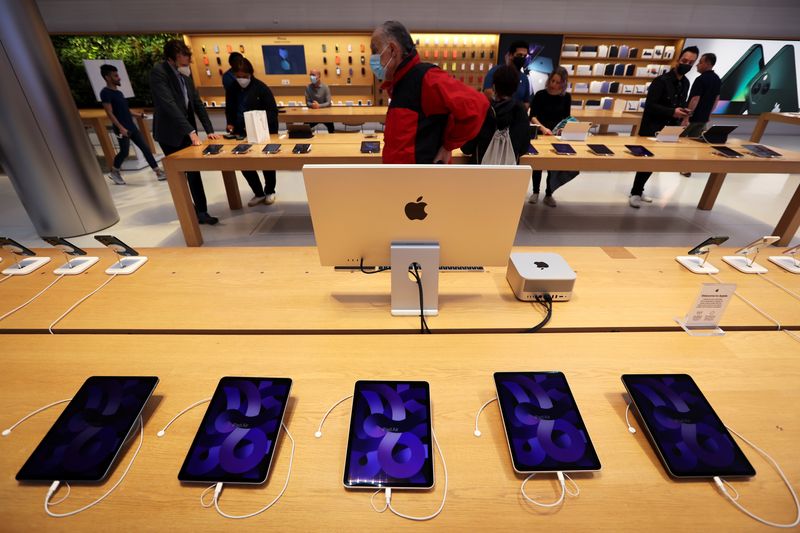Investing.com -- iPhone 16 resale prices on September 20, the first day of shipment, have “collapsed within the first three hours of trading,” Jefferies revealed in a note.
By around 1:30 PM, dealers in the Mongkok area had ceased purchasing iPhone 16 models, with the exception of the Pro Max in Desert color with 256GB storage, the investment bank noted.
The data contrasts sharply with last year’s performance of the iPhone 15, where the 15 Pro Max was still trading at a 3%-34% premium four days after shipments began.
“This supports our cautious view on China demand,” Jefferies analysts wrote.
They explain that Apple Inc's (NASDAQ:AAPL) new iPhones trade much like stocks in Hong Kong during the first few weeks of shipments, as the city hosts one of the world’s largest smartphone resale markets.
Dealers purchase brand-new iPhones from consumers at a premium and resell them in markets like China and Russia, where demand often exceeds supply. However, with the launch of iPhone 16 today, Jefferies notes it has been "one of the worst trading days for a new iPhone."
After the first hour, the iPhone 16 Plus premium turned negative, which may not be too surprising. For the iPhone 16 Pro Max, all four colors initially opened with a premium of 15% to 24%, but within two hours, that margin had shrunk to between 4% and 17%.
“Another 30 mins later, most dealers in Mongkok stopped buying any iPhone 16 models, other than 16PM in desert color and 256GB memory (a few hundred HK$ premium),” analysts added.
While the iPhone 16 Plus appeared to be sold out on official sites in both Hong Kong and China, analysts believe there is still stock available on platforms in China, with delivery times in Hong Kong at just 10 days.
As such, they were not surprised to see the iPhone 16 Plus premium shrink quickly. However, the shift from a premium to a discount within just one hour is notably worse than last year, when it took four days for such a change.
Last year, certain colors and memory configurations, particularly the 256GB models, were still trading at a premium nine days after shipments began. The fact that even the Pro Max’s premium disappeared within three hours this year likely caught the market off guard.
Jefferies attributes the softer demand to a combination of factors, including an absence of significant hardware innovations and lower trade-in values. It also points out that supply for the iPhone 16 Pro Max is less constrained this year, as previous camera yield issues have been resolved.
Looking ahead, the firm believes the upcoming launch of Apple’s AI services in the U.S. next month could potentially drive a stronger wave of consumer demand.
